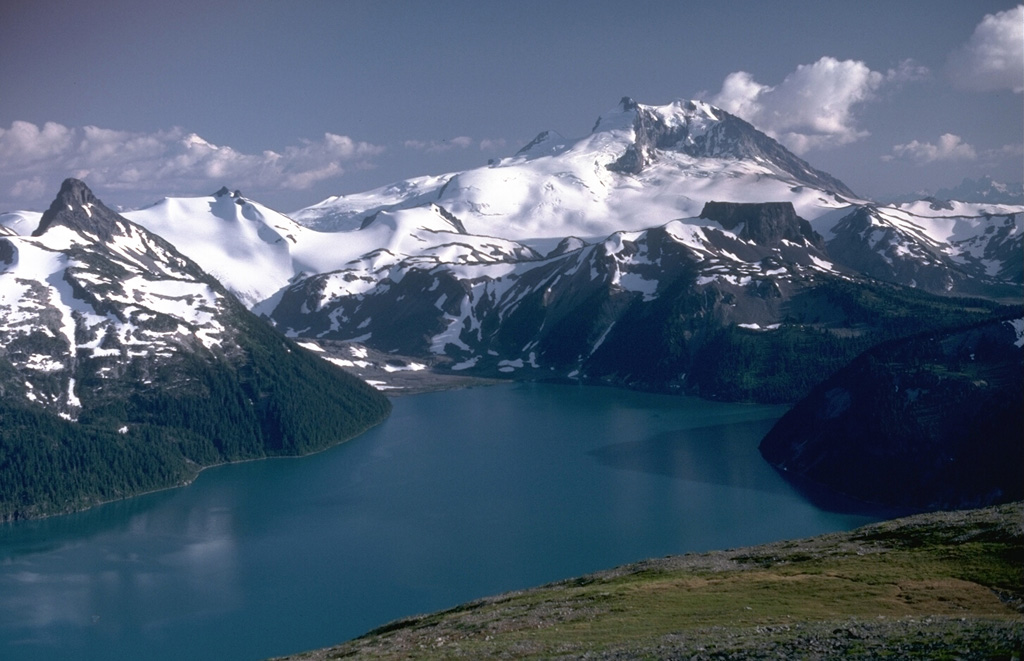Image GVP-02713

Mount Garibaldi, rising above Garibaldi Lake to the north, is a largely Pleistocene stratovolcano with a summit lava dome complex. The volcano was partially constructed over the Cordilleran ice sheet and contains many ice-contact features. Its final eruptions during the early Holocene included lava flows that mantled the western landside scarp and a massive lava flow from Opal Cone, a SE flank vent, that traveled 20 km to the south and west.
Photo by Lee Siebert, 1983 (Smithsonian Institution).
![]() This image is made available under the Public Domain Dedication CC0 license, but proper attribution is appreciated.
This image is made available under the Public Domain Dedication CC0 license, but proper attribution is appreciated.
Keywords: stratovolcano | erosion

Garibaldi
